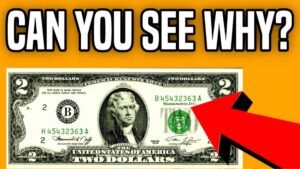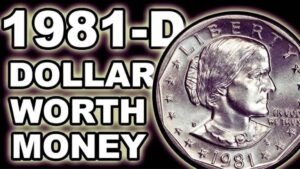Imagine finding a simple golden dollar in your change, only to discover it’s worth $72,000. Hidden in plain sight, the 2000-P Sacagawea Dollar Mule Error has shocked collectors and casual hobbyists alike, turning pocket change into life-changing treasure.
What Is the 2000-P Sacagawea Mule Error?
The mule error coin is one of the most famous mistakes in U.S. Mint history. Instead of pairing Sacagawea’s reverse with her own obverse, a minting mishap struck the Washington quarter obverse on the golden dollar reverse, creating a rare hybrid. This odd pairing shouldn’t exist — yet it does.
The History Behind This Stunning Mistake
In 2000, the U.S. Mint was producing billions of new Sacagawea Dollars. Somewhere in the Philadelphia Mint, dies from the Washington Quarter were mistakenly used with the Sacagawea reverse dies. A small batch of coins was struck before workers caught the mistake, and these coins slipped into circulation.
Why It’s Worth $72,000 Today
Collectors crave rarity, and the Sacagawea Dollar Mule Error delivers exactly that. With only a few dozen confirmed, these coins are auction sensations. Their unique design flaw combined with scarcity makes them worth tens of thousands. The record price at auction has topped $72,000 for a single specimen.
How to Spot the Mule Error
Identifying this coin isn’t as hard as you think. If you see Sacagawea’s soaring eagle reverse, flip it over carefully. Instead of Sacagawea’s portrait, you’ll find George Washington’s bust from a quarter — a shocking mismatch that reveals the error instantly.
Key Differences: Normal vs. Mule Coin
| Feature | Regular Sacagawea Dollar | Mule Error Coin |
|---|---|---|
| Obverse | Sacagawea with child | Washington Quarter portrait |
| Reverse | Eagle in flight | Eagle in flight |
| Edge | Plain | Plain |
| Metallic Look | Golden | Golden |
Who Discovered It First?
The first reported Sacagawea Mule Coin surfaced in 2000 when a collector noticed the strange combination. Word spread like wildfire in numismatic circles. Since then, fewer than 20 have been authenticated, each fetching extraordinary prices at major auctions.
Why Collectors Go Crazy for Mule Errors
Mule coins are prized because they represent pure minting accidents that slip through strict controls. Their combination of scarcity, novelty, and error intrigue makes them irresistible. For collectors, owning one is like holding lightning in a bottle.
Auction Records and Notable Sales
| Year of Sale | Auction House | Sale Price |
|---|---|---|
| 2001 | Heritage Auctions | $29,900 |
| 2010 | Stack’s Bowers | $70,000 |
| 2021 | Heritage Auctions | $72,000 |
| These jaw-dropping figures prove how high demand remains for this rare error. |
Tips to Avoid Fakes
Since high prices attract scammers, it’s crucial to authenticate. Look for:
- Correct golden alloy consistent with 2000-P Sacagawea dollars
- Precise strike quality matching genuine mint production
- Professional grading from PCGS or NGC to confirm authenticity
Expert Insights
Numismatic experts say that while the mule error is rare, more undiscovered examples could still exist in bank rolls, collections, or forgotten stashes. That means everyday hobbyists still have a chance to stumble upon a fortune.
FAQs
Q: How many Sacagawea mule coins exist? Fewer than 20 confirmed, though the exact number remains unknown.
Q: Where can I sell one if I find it? Major auction houses like Heritage Auctions or Stack’s Bowers.
Q: Can a local coin shop verify it? Some can, but for safety, always get certification from PCGS or NGC.
Conclusion
The 2000-P Sacagawea Mule Error is more than a coin — it’s a once-in-a-lifetime discovery worth $72,000 or more. With so few known examples, spotting one could change your life. Next time you see a golden dollar, look closely. You might just uncover America’s most thrilling minting mistake.




